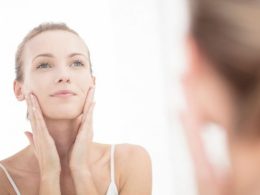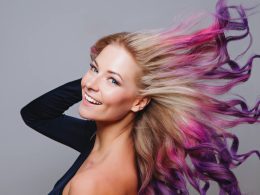Are you a hair-care enthusiast who keeps up with the latest trends in the industry? If so, then you’ve probably heard of Olaplex and their revolutionary hair products. However, this brand has been on the receiving end of both praise and criticism lately due to some controversial products. From TikTok frenzy to boycotts, Olaplex is making headlines for all the wrong reasons. In this blog post, we’ll take a closer look at what’s happening with Olaplex and their controversial hair products that have sparked so much debate among consumers. So sit tight, grab your favorite drink, and let’s dive right into it!
What is Olaplex?
Olaplex is a brand that has been taking the hair-care industry by storm in recent years. It was founded by chemists, Dr. Eric Pressly and Dr. Craig Hawker, who sought to create a product that could repair damaged hair strands from within.
What makes Olaplex unique is its patented ingredient, Bis-Aminopropyl Diglycol Dimaleate (try saying that three times fast!), which works to rebuild broken bonds in the hair caused by chemical treatments such as coloring or perming.
The brand quickly gained popularity among hairstylists and celebrities alike for its ability to transform even the most damaged of locks into healthy-looking tresses. The company’s success led them to expand their line of products beyond just salon use and into at-home treatments like shampoos and conditioners.
While many consumers swear by Olaplex’s transformative results, others have raised concerns about the safety of some of their products’ ingredients. These concerns have sparked controversy surrounding this once-beloved brand.
What are the controversial hair products?
Olaplex is a hair care brand that has been the center of controversy due to its products. The company uses silicones in some of their formulas, which many people argue are harmful to hair health. Silicones can cause build-up on the scalp and weigh down hair strands, causing them to become limp and lifeless over time.
Furthermore, Olaplex’s No. 3 Hair Perfector treatment contains an ingredient called Bis-Aminopropyl Diglycol Dimaleate, which is not approved by the FDA for use in hair products. This chemical acts as a bonding agent between disulfide bonds in the hair shafts but has raised concerns about its safety.
Many consumers have reported negative reactions after using Olaplex products, including dryness, breakage, and scalp irritation. Several hairstylists have also spoken out against Olaplex and urged their clients not to use these controversial products.
Despite these controversies surrounding Olaplex’s ingredients and potential side effects on users’ hair health, many people still swear by these products for their ability to repair damaged locks effectively. However, it’s essential always to be aware of any potential risks when using such treatments or any other beauty product on your skin or body.
The TikTok Frenzy
The TikTok Frenzy over Olaplex’s controversial hair products is not something that can be easily ignored. The social media platform has become a hub for beauty enthusiasts, and the brand’s products have been widely reviewed by popular creators.
Many users on TikTok have praised Olaplex for its ability to repair damaged hair, leading to an increase in sales of the product. However, some influencers have raised concerns about the ingredients used in these hair care products and their potential impact on people’s health.
The controversy surrounding Olaplex’s Hair Perfector No. 3 treatment went viral on TikTok after several videos claimed that it contained harmful chemicals like formaldehyde. The brand responded by stating that they do not use formaldehyde or harsh chemicals in any of their formulas but instead use science-driven technology to improve hair health.
Despite this response from Olaplex, many users are still urging others not to buy their products due to concerns over safety and transparency regarding what goes into them. It remains unclear how this will affect future sales of the company as well as its reputation within the beauty industry moving forward.
The Boycotts
The Boycotts against Olaplex have been gaining traction on social media in recent months. Consumers are outraged over the use of animal testing and potentially harmful ingredients in some of their hair products.
Many users on platforms such as Twitter and Instagram have shared their negative experiences with Olaplex products, citing concerns about scalp irritation, hair breakage, and even hair loss. As a result, many consumers have pledged to boycott the brand altogether.
The controversy has also sparked discussions about ethical consumerism and the responsibility companies have towards their customers. Some argue that it is up to brands like Olaplex to be transparent about their practices and ingredient lists so that consumers can make informed choices.
In response to the boycotts, Olaplex has released statements defending their safety standards and commitment to using high-quality ingredients. However, this may not be enough for many customers who feel betrayed by a company they once trusted.
The boycotts highlight the power of social media in holding companies accountable for their actions while also raising important questions about product safety and transparency within the beauty industry.
Olaplex’s Response
Olaplex, the hair care brand that has been at the center of controversy in recent months, has responded to allegations made against its products. The company has defended its products and claimed that they are safe for use.
In response to concerns raised about product ingredients potentially causing scalp irritation and hair loss, Olaplex stated that their formulas have undergone rigorous testing and meet all safety standards. They also emphasized that their products contain no harsh chemicals or toxins.
Olaplex acknowledged the negative feedback it received from some customers on social media platforms like TikTok but maintained confidence in its research and development efforts. The brand expressed a commitment to transparency with consumers by providing detailed information about their ingredients and manufacturing processes.
The company’s CEO also addressed concerns regarding animal testing by stating that Olaplex does not conduct any animal testing on its products nor do they hire external organizations to test on animals.
Olaplex’s response was an attempt to reassure customers of the safety and quality of their hair care line while also addressing criticisms head-on. Despite this response, it remains unclear whether consumers will continue supporting them or opt for other brands instead.
Conclusion
Olaplex’s controversial hair products have sparked a lot of buzz on social media and beyond. The TikTok frenzy brought attention to the brand, but also raised concerns about the safety and effectiveness of their products. As more people shared their experiences with Olaplex, the controversy grew stronger.
The boycotts were a clear sign that consumers are demanding better from brands in terms of transparency and accountability. By ignoring these concerns, companies risk losing customers and damaging their reputation.
Olaplex’s response shows that they are willing to listen to feedback and make changes when necessary. However, it remains to be seen whether they will address all of the issues raised by their critics.
As consumers, we have the power to hold companies accountable for their actions. By supporting ethical brands that prioritize sustainability and safety over profits, we can send a message that we won’t tolerate harmful practices in the beauty industry.
This controversy is not just about one brand or product – it’s part of a larger conversation about consumer rights and corporate responsibility. It’s up to each one of us to decide which side we’re on.











